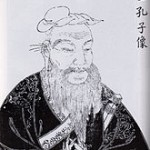We are all aware that the “millenials” (today’s 18-25 year old college students) are more plugged into technology than students of the past. They are more apt to get their news from the internet than a newspaper or TV, communicate with friends and family by texting and are constantly plugged into social media. The bottom line is that they respond differently to content presentation than past generations. They do seem to respond less well to being passive vessels absorbing course content via lecture…. I wonder if passive learning has really ever been such a good idea …..
“I hear and I forget. I see and I remember. I do and I understand” is a quote attributed to Confucius that shapes many of my approaches to education.  As much as possible, I try to incorporate “doing” into my instructional methods either by having students actively interacting with the course material during class time or by using Project-Based Learning (PBL) approaches where students become responsible for their own learning through the in depth research needed to produce a product that will be used to inform classmates and/or the public instead of assignments only viewed by an instructor. I have experimented with PBL-style instruction in classes for non-science students as well as those for chemistry majors and graduate level in-service teachers. Since most of the projects have involved student use of technology, they also fit into the scope of this blog.
As much as possible, I try to incorporate “doing” into my instructional methods either by having students actively interacting with the course material during class time or by using Project-Based Learning (PBL) approaches where students become responsible for their own learning through the in depth research needed to produce a product that will be used to inform classmates and/or the public instead of assignments only viewed by an instructor. I have experimented with PBL-style instruction in classes for non-science students as well as those for chemistry majors and graduate level in-service teachers. Since most of the projects have involved student use of technology, they also fit into the scope of this blog.
For the last couple of years, I have delivered my organic chemistry class in the “flipped” mode. Students watch short video lectures outside class rather than hour-long in-class lectures. During the class period students actively review the material and solve problems using student response devices (“clickers”).
In some other courses, this online video technique is combined with a PBL approach (which also allows students to use writing skills within a scientific context). My environmental chemistry course was one of the University’s online offerings this year. Video presentations of materials was combined with current interest, online discussions and a project in which each student was to present a current topic to the members of the class. This was done by each student producing a “podcast” in the vein of the “How Stuff Works” podcasts. My energy resources class uses video lectures coupled with a major class project, the writing of an electronic textbook while teams of students in my liberal arts core general science class for those in the University’s Honors Program produce video documentaries that are publicly screened.
Flipping your class and facilitating student projects is quite labor intensive, but I am very satisfied with the fruits of my labor and can’t imagine reverting to a lecture-centric approach. I will write future posts with more details about the technology used in creating online video materials and by students in their projects.
